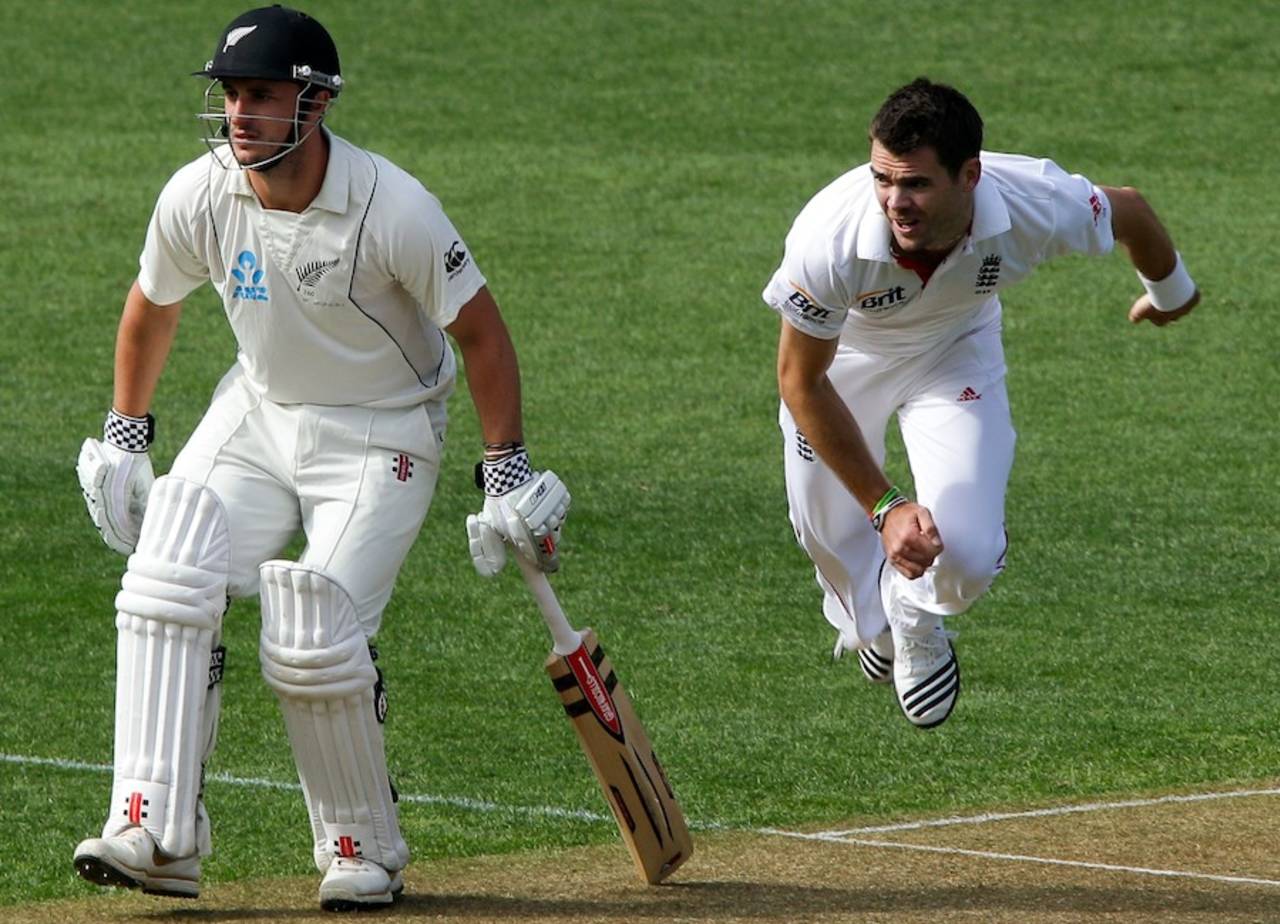Anderson, greatness and England's lost generation
Over the course of England's next series, James Anderson should become the 26th bowler to take 300 Test wickets. That no Englishman has reached 400 - or 10,000 runs with the bat - is indicative of how the record books left them behind
Jon Hotten
03-Apr-2013

James Anderson moved on to 298 Test wickets during England's tour of New Zealand • Getty Images
Barring injury and other disasters, James Anderson will, at some point next month, become the 26th bowler in the history of Test match cricket to take 300 wickets. He will be only the fourth Englishman to pass the mark, which, considering that Fred Trueman was the first to do so in 1964, puts him in elite company as far as the three lions go.
Trueman's landmark will be fifty years old come next summer. When he walked off the field at the Oval having taken the defining wicket of Neil Hawke, Fred was asked if he thought anyone would beat his record. "I don't know," he replied, "but they'll be bloody knackered if they do." To Trueman in 1964, the thought of 400 Test wickets was a distant Everest. The notion of a man taking 800 might have been enough to leave even Fred temporarily wordless, and he didn't quite live to see it done.
Ian Botham retired with the English record of 383 wickets in 1992 but 11 bowlers have gone on past 400: three from India, two from West Indies, two from Australia, and one each from Sri Lanka, New Zealand, South Africa and Pakistan. Or, put another way, at least one player from each of the other seven major Test nations has achieved something that no English bowler has.
With his almost undetectable variations of grip and wrist position, his rudder of a thumb, his angle on the crease, his endurance and his pace, Anderson can be irresistible, symphonic in his variations on a narrow theme. He knows about as much as any man can about the fragile mysteries of swing, because he can on occasion be defenceless without it. Perhaps more than any other bowler in the elite echelon that he is about to join, Anderson is hostage to forces beyond his control.
When he surmounts that 300 barrier (he currently has 298), it will be with an average of above 30 runs per wicket. It's odd but unavoidable that such a blunt stat will temper judgement of the feat and of Anderson's standing, but he will be one of just three of the 26 bowlers in the club with an average of above thirty. Of the others, Harbhajan Singh and Brett Lee enjoyed long periods with their cumulative average below 30, and only Daniel Vettori has never dipped under the mark. Anderson was last there in August 2003, after his sixth Test match.
"During the ragged decade of the 1990s and beyond, England stalled while records piled up"
Andy Zaltzman once dug out a gem of a stat: that Viv Richards needed to make at least 20 in his final Test innings to end his career with an average of more than fifty. Twenty runs, after the levels of Richards' accomplishments, were nothing, but in a way they were everything too. It wouldn't seem right that the avatar of modern batsmanship was forever denied the statistical company of, for example, Shivnarine Chanderpaul.
So it is with bowlers. Thirty seems to be the mark at which ambiguity begins, where good and great slowly begin to separate from one another, where a decision has to be made as to who belongs where.
Anderson's career has had a different sweep to many. His first 100 wickets cost him 35. By the time he reached 200, the figure was under 32. Now it is a hair above 30. It is a gentle curve, reflective of a craft being slowly but progressively refined.
At his current strike rate of a wicket every 59 deliveries, he will need to bowl another 800 overs to go past Botham, in another thousand he could become the first Englishman to 400. At his rate of around 36 overs per Test, that's another 30 games, or three years of full fitness and endeavour.
At around the same time, Alastair Cook or Kevin Pietersen might be the first English Test batsman to pass 10,000 runs, a total already exceeded by three men from India, three from Australia, two from West Indies, two from Sri Lanka and one from South Africa.
During the ragged decade of the 1990s and beyond, England stalled while these records piled up. It's only now, as the same achievements come into view for a generation of players to have benefited from central contracts, consistency of selection, rigour in coaching and financial investment that their scale is apparent.
The record books say that the world left England a long way behind. The story of a generation is told through its absence from them.